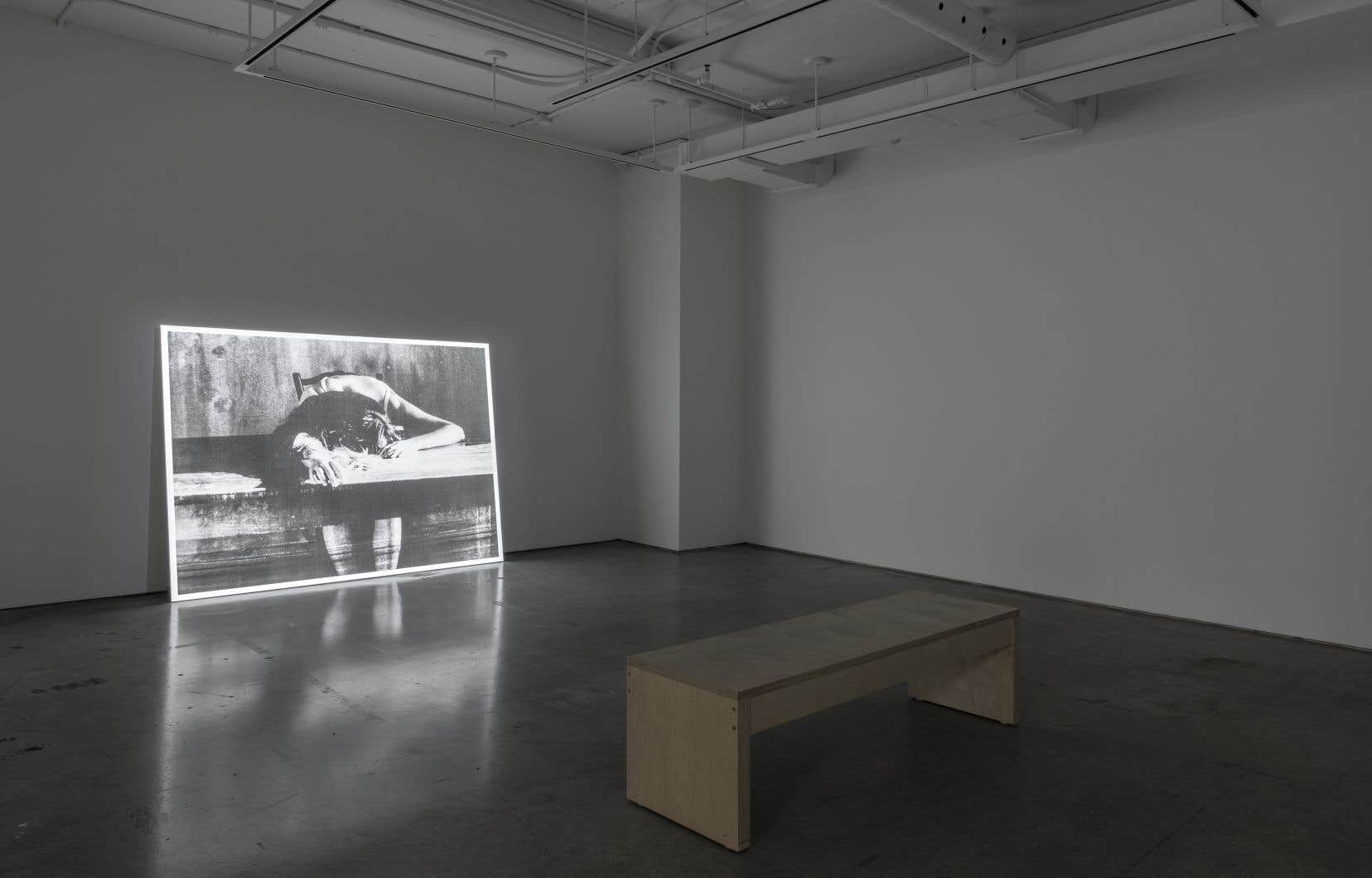How to talk about this complex work with a very intimate tone without impoverishing it, without reducing it to a simple illustration or a description of ideas? Because let’s not forget, especially nowadays, that art cannot be subject to a teaching function. In our time, art is once again often reduced to a simple illustration of political commitments or to highlighting, certainly necessary, a forgotten history… Art must take on a strong sensitive form that goes beyond good intentions. Otherwise, to take up an idea dear to the philosopher Adorno, this risks leading to another form of “disartification” of creation, not by the cultural industry, but this time because of its instrumentalization and its reduction by the political activism.
Let’s start with the facts
At the heart of Sophie Jodoin’s video installation, the visitor will find a projection of more than 21 minutes showing archives preserved at Artexte. During a creative residency that began in 2019 and was interrupted by the pandemic, Jodoin delved, from A to Z, into the files of Canadian women artists deposited in this extremely important archival storage space for the visual arts in the country.
Thanks to his cell phone, Jodoin took photos of the documents that were there – mainly artists’ books, invitation cards, posters, slides of works – then printed them in black and white to then scan these images. She says she likes the formal qualities of photocopies as well as printed photos. And by digitizing these laser prints, Jodoin was able to retain a certain almost ashy texture… This gives the whole a sometimes very soft warm gray color that seems on the verge of fading away. Using the figure of his mother as a source of inspiration — what she could have done or embodied — Jodoin has built a form of narrative, but also and above all formal, where all these creative voices speak out , respond to each other, echo each other… But as the artist explained during a talk, it was built “without hierarchy between the artists as to their age, their place of creation”, their fame and even with regard to the media used. They would speak there in one breath. But their voices could also run out of steam, many of them already being somewhat forgotten. Jodoin did his “own education on Canadian art” there. And by consulting the sources used, you can also make your own. The final visual work is supported with great accuracy by a music, minimalist and fragile – repetitions on the piano of two notes (E flat and F?) losing and reaffirming themselves in the silence -, a music thought by Karen Trask.
Another look at art history
Of course, we could see in this work an echo of a feminist look at the writing of art history. Let us recall that this problem was marked in 1971 by the art historian Linda Nochlin, who then published in the art journal ART news an article that has become famous. In “Why Haven’t There Been Great Female Artists? », she explained how the mechanics of training, distribution and consecration of artists work. But we should pay attention to the conclusions to which this socio-historical re-reading of the creative genius could lead. We should not conclude that there were no women artists. We must realize that their society and subsequent history have unfortunately put them aside. And this exhibition will remind us that this process is still very present today…
As several friends have pointed out to me lately, while Riopelle’s 100th anniversary will be celebrated with great fanfare, what about the birthday of Betty Goodwin, who was also born in 1923? Could it be, among other things, because Françoise Sullivan is still alive that she is also celebrated? When one is a woman artist, should one better live a long time so as not to pass into the dustbin of history?
This work by Jodoin is therefore a tribute to these creators, a tribute in which we can also see a consecration of all these librarians and archivists — very often women — who watch over the past.
A work of art above all
But this work goes far beyond the committed purpose that its creative process embodies. There is above all in this creation a very beautiful and very touching formal reflection on time, memory, disappearance, the fragility of life, death, but also on the hope that filiation and community provide… work which, in its desire to embrace all these women from A to Z, touches by a poetic approach to the infinity of history and time… It must be said that many of these women in visual arts whose traces we find at Artexte have worked with female poets. Jodoin knows how to make a work where art manages to convince us of the relevance of art, thanks to artistic means, and not only thanks to the force of the ideas evoked.
